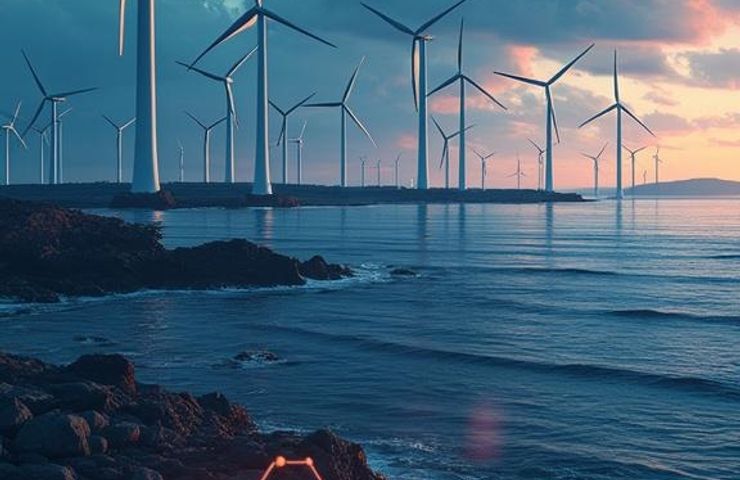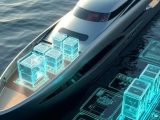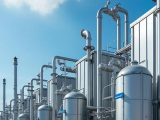
Newfoundland and Labrador Extends Wind Energy Reserves to Accelerate Green Hydrogen Production
August 27, 2025Extended Timelines: More Runway for Wind-Hydrogen
Steve Crocker, Minister of Industry, Energy and Technology for Newfoundland and Labrador, has dropped some big news: the government is pushing the deadline for the Crown lands Wind Energy Land Reserve from late 2025 out to February 28, 2026, and giving the Wind Energy Contingency Land Reserve an extra stretch until March 31, 2026. Why? Well, wind-driven green hydrogen projects—and their complex electrolysis setups—take time. This little nudge means developers can lock in their financing, engineering plans, and all their stakeholder hookups without racing against the clock.
“We’re giving proponents the runway they need to secure investors and scale up our wind-to-hydrogen capabilities,” Crocker explained, noting that this move signals wind-powered hydrogen as a true cornerstone of the province’s clean energy—and broader sustainable energy—playbook.
Key Players and Projects
With that extension in hand, six teams are now in the running:
- EverWind NL Company: After signing a memorandum of understanding with Miawpukek Horizon Maritime Services, they’re plotting a transshipment route to ship green hydrogen and clean ammonia across the Cabot Strait into Nova Scotia.
- Exploits Valley Renewable Energy Corporation: This local outfit is eyeing a 1.5 GW onshore wind farm tied to advanced electrolysis units, aiming to deliver zero-emission hydrogen to nearby industrial hubs by 2030.
- Toqlukuti’k Wind and Hydrogen: A joint project between ABO Energy and Copenhagen Infrastructure Partners, they’re shooting for up to 5 GW at Irish Loop. Their plan? Power a fleet of proton exchange membrane electrolyzers to churn out clean ammonia for overseas markets.
- World Energy GH2 Ltd.: Spearheading the province’s flagship export scheme, they’ve pitched a 3 GW wind-to-hydrogen complex near Holyrood, complete with liquefaction plants and dedicated shipping docks aimed at Europe.
- Argentia Renewables LP: On the Argentia peninsula, this consortium is planning a 2 GW wind farm paired with alkaline electrolyzers—already hashing out a long-term offtake deal with clean fuel importers in Asia.
- North Atlantic Refining Limited: Once all about oil and gas, they’re now converting old Argentia storage tanks for ammonia and retrofitting marine docks to handle wind-derived fuels.
How Wind-to-Hydrogen Works
It’s pretty straightforward: crank up giant wind turbines—onshore or offshore—once the breeze hits around 7 m/s, and they turn air currents into juice. That power then runs through electrolysis gear (think quick-reacting PEM setups or budget-friendly alkaline units), where water splits into hydrogen and oxygen right at the electrodes.
The produced hydrogen may be:
- Compressed or liquefied on-site, then loaded onto specialized carriers.
- Stashed in underground caverns or big salt domes for grid balancing.
- Blended with nitrogen in a Haber–Bosch plant to make clean ammonia, which is easier to ship and can be cracked back into hydrogen where it’s needed.
Strategic and Economic Implications
It’s more than just pushing dates—it lines up perfectly with Newfoundland and Labrador’s drive to build a low-carbon, sustainable energy economy. With the extra land access, the province is hoping to:
- Attract big-ticket investments by giving institutional backers clear milestones and less project risk.
- Let developers nail down offtake agreements with steel mills, refineries, and utilities eager for industrial decarbonization.
- Kickstart local supply chains—from turbine blade makers to companies building electrolyzers—creating a homegrown hydrogen infrastructure network.
Developers say this could translate into thousands of jobs during construction and operations. Of course, those numbers come straight from the project teams—official audits or independent studies haven’t backed them up just yet.
Collaboration and Community Engagement
These developers know they need more than permits—they need people on board. EverWind NL Company’s partnership with Miawpukek Horizon Maritime Services (an Indigenous-owned marine operator) is setting the standard for revenue-sharing deals and skills training for locals. Public consultations are buzzing in fishing villages, where residents are weighing job opportunities against new turbines dotting the coastline.
Benefit talks are focusing on:
- Employment quotas for Indigenous and local hires
- Renewable energy credits for neighboring communities
- Community funds to back local projects
Context and Next Steps
Newfoundland and Labrador’s economy has long bounced between fishing, forestry, and offshore oil—boom one minute, bust the next. Back in 2018, the Atlantic Link cable that carried Labrador hydroelectric power down to Maritime Canada set the stage for a more flexible grid ready to handle wind output. More recently, federal programs like Smart Renewables and Electrification Pathways (SREPs) and the Green Transition Fund have started dropping grants and loan guarantees to get electrolysis projects off the ground.
Those initiatives are driving innovation in hydrogen production, fueling next-gen green hydrogen research and scaling up modern facilities to power Newfoundland and Labrador’s shift toward sustainable energy.
Looking Beyond 2026: Timelines and Hurdles
Now that the land rights are locked in through early 2026, here’s the rough playbook most teams are working with:
- Q3 2025–Q1 2026: Front-end engineering and design (FEED) plus final permitting applications.
- Q2 2026–Q4 2026: Final investment decision (FID) once offtake deals and funding are buttoned up.
- 2027–2029: Raising turbines, installing electrolyzer modules, and building out port facilities.
- Late 2029–2030: Commissioning everything and ramping up to full speed—linking into export contracts and grid services.
Of course, a few moving parts could throw things off: steady supply chains for blades and electrolyzers, quick federal sign-offs under the Impact Assessment Act, and clear rules from Ottawa on mixing hydrogen into gas networks—or carving out dedicated export corridors. Projects in the North Sea have benefited from faster permitting and shared infrastructure, but they also underscore how global shortages and swingy commodity costs can trip you up.
Comparative Insights
Newfoundland and Labrador isn’t treading this path alone—other countries have blazed similar trails. Take Denmark’s Copenhagen Infrastructure Partners, which lined up land leases and grid hookups in the Baltic Sea in under two years, all by pairing wind with clean ammonia export. Down in Australia, the massive Asian Renewable Energy Hub highlights how tangled multi-jurisdiction approvals can get. Back home, extending those land reserve deadlines might seem small, but it’s a smart, low-risk way to give early-stage projects the breathing room they need.
At the end of the day, tacking on up to seven more months of land exclusivity can make all the difference for nailing down those EPC contracts before the clock runs out. If these developers hit their marks, Newfoundland and Labrador could not only revamp its spot on the global energy map but also drive big gains in sustainable energy and regional economic growth—while staying true to national and international zero-emission tech goals.



 With over 15 years of reporting hydrogen news, we are your premier source for the latest updates and insights in hydrogen and renewable energy.
With over 15 years of reporting hydrogen news, we are your premier source for the latest updates and insights in hydrogen and renewable energy.